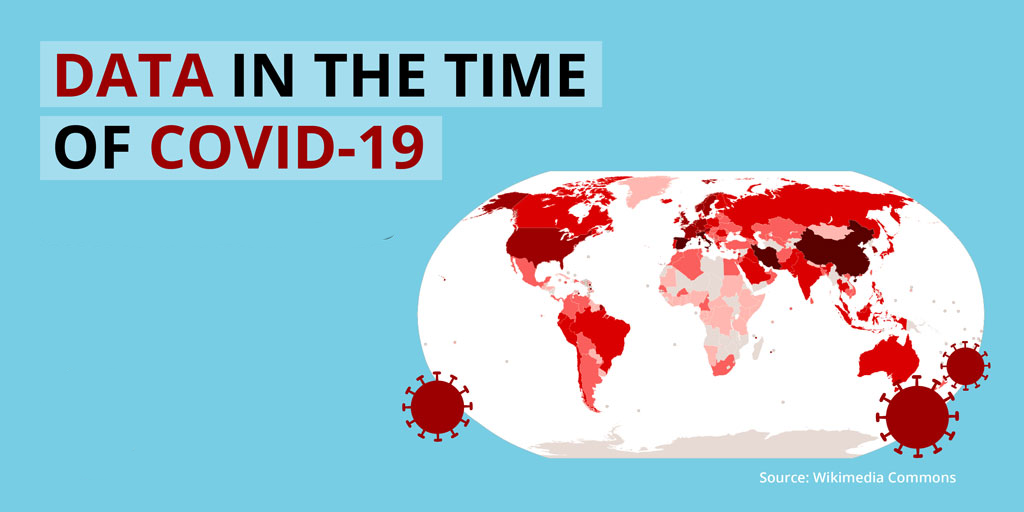COVID-19 has radically altered most aspects of our social worlds and the way we do business. One of the largest impacts to organizations has gone on mostly unseen to the outside world. Companies have been quickly altering the way they manage the keys to their data kingdoms to maximize their data’s value to survive and compete.
A new Google Cloud report suggests that the pandemic has led to a significant increase in the use of AI and other digital enablers among manufacturers. As a result of the pandemic, 76 percent of the respondents in the poll (conducted on 1,000 manufacturing executives across seven countries) have turned to data and analytics, cloud and artificial intelligence.
Actually, not adapting with the New normal is not an option for the data driven companies. A McKinsey report states “Today, time is a luxury that leaders don’t have. COVID-19 has upended business as usual for communities and corporations, which must now strive to stay afloat and remain profitable. In these uncharted waters, where the tides continue to shift, it’s not surprising that analytics, widely recognized for its problem-solving and predictive prowess, has become an essential navigational tool.”
For most organizations this is a learning experience. They are now asking themselves challenging questions, ones that will have a long-term impact on their data and analytics strategies. We share four key responses that have emerged from crisis-induced challenges.
Movement to Cloud and SaaS Will Accelerate
Movement of data to cloud and use of Software As A Service was not a choice but a forced option due to implementation of work-from-home. No longer does the top management dictate that data should remain in confines of offices and software should be loaded on your desktop / laptop. In fact, many organizations have accelerated their plans for wider deployment of SaaS and cloud-based data and analytics models. Entire ERP, CRM, SCM whether it’s SaaS, data storage, or analytics is on cloud. This enables real-time data sharing from remote office to central office and vice versa. Companies that resist this movement will see an erosion in any competitive advantage they may have had previously. Relying on legacy on-premise data environments eliminates the tremendous scalability and cost-savings benefits, along with the nimbleness and real-time access to data, inherent in successful cloud and SaaS data and analytics deployments. Movement to Cloud and SaaS is not just here to stay but will accelerate.
Introducing Self Service & Decline Of Dashboard
The use of predefined dashboards will decline. When the users realize all the data is “within grasp” they will want to make more and more data-driven decisions. With use of SaaS large scale customization may not be possible. Introducing “Do It Yourself” or “Self Service” reports. This will ensue that the most relevant insights will stream to each user based on their context, role or use. These dynamic insights leverage technologies & tools which empower users to be self-sufficient in terms of extracting information from the tons of data now available. Business Intelligence (BI) Tools like Cognos, Tableau, PowerBI, QlikSense come with the Self-Service model and these tools now offer new AI enabled and NLP-driven user experiences. So, witness the decline of standard predefined dashboard and say a hi to self-serve data-discovery.
Cyber Security & Not Just Data Security
In order to facilitate rapid movement to Cloud and SaaS, it is possible that, apart from basic VPN and permissions-based security of Data, not enough attention was given to formulate proper Data Security policies including but not limited to Business Continuity Planning. It will not be long that some smart-alecs bypass the existing basic security or some organizations come under denial-of-service attack or even worse a hacker blackmail. This will require highly focused response which will encompass complete Cyber Security and not just Data Security. We have already seen the trend towards larger hiring of Cyber Security professionals. A CIO report from Cybersecurity Ventures’ predicts that there will be 3.5 million unfilled cybersecurity jobs globally by 2021.
AI Enabled Small Data Analytics
Not every organization needs to deal with and handle big data. AI will combine small and wide data (a variety of small and varied or wide, unstructured and structured data sources to enhance contextual awareness), as opposed to big data, to solve a number of problems for organizations be it in Forecasting, Supply Chain, Customer Relation or Human Resources (just to name a few). Small data, as the name implies, is able to use data models that require less data but still offer useful insights.
Gartner Top 10 Data and Analytics Trends for 2021 states that “by 2023, more than 33% of organizations will have analysts practicing decision intelligence, including decision modeling.” Actionable intelligence from these analysts will provide the basic framework to help organizations design, compose, and tune decision models and processes in the context of business outcomes and behavior”.
To summarize we can say the organizations all over the world have reacted positively and pro-actively in post-Covid scenario by harnessing the power of data analytics coupled with artificial intelligence. Towards that objective whatever is required is being done.
By Cyrus Lentin (Consultant with IndusGuru Network Partners)
Disclaimer: The opinions expressed in this column are that of the writer. The facts and opinions expressed here do not reflect the views of IndusGuru Network Partners
#ai #data #dataanalytics #cybersecurity
